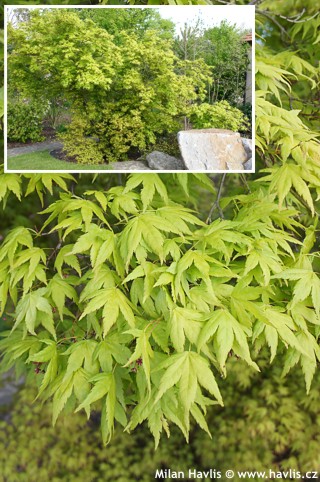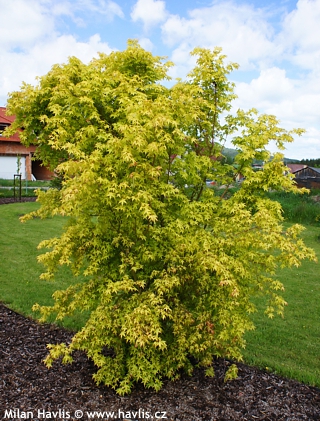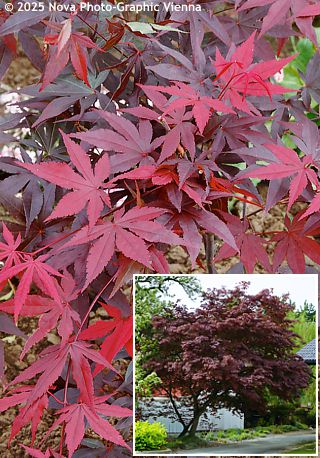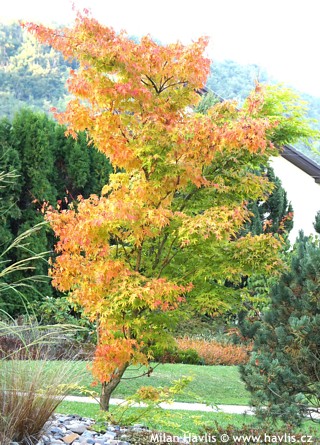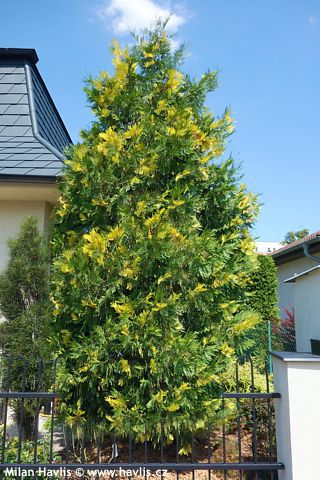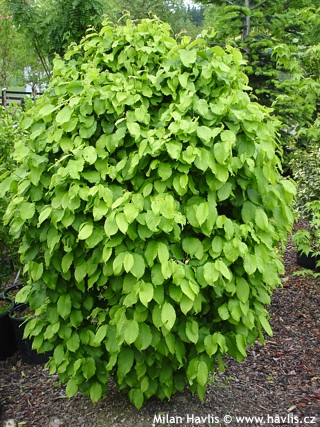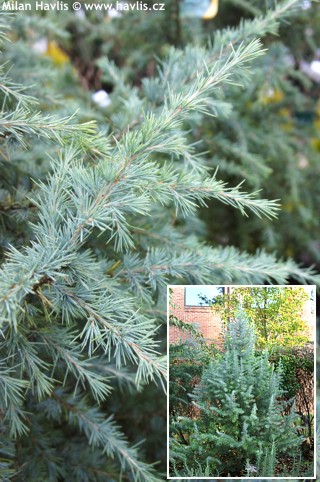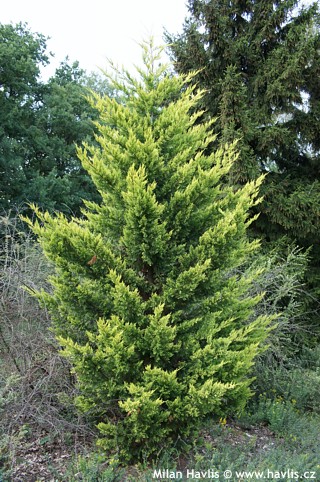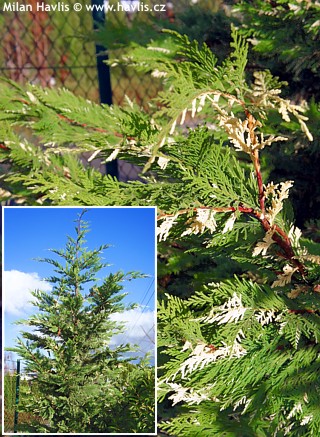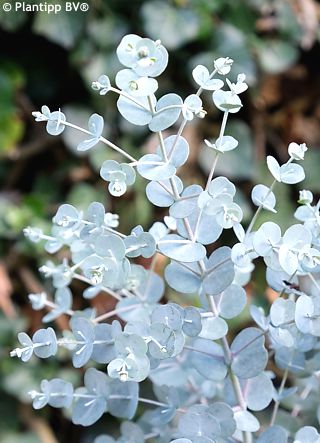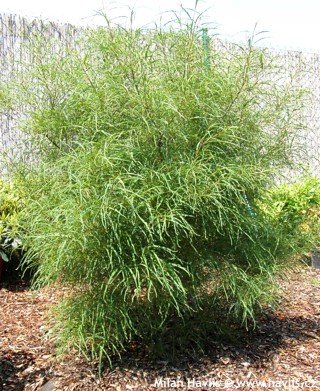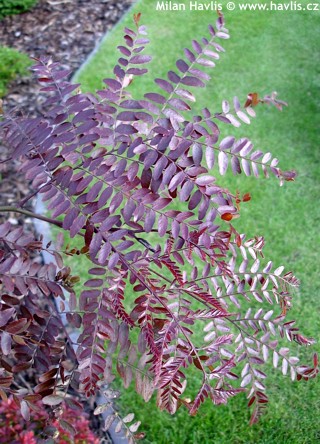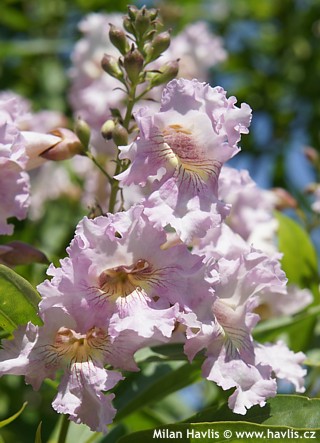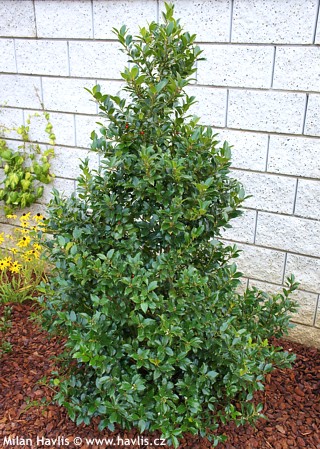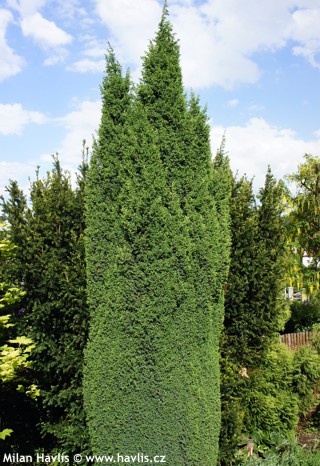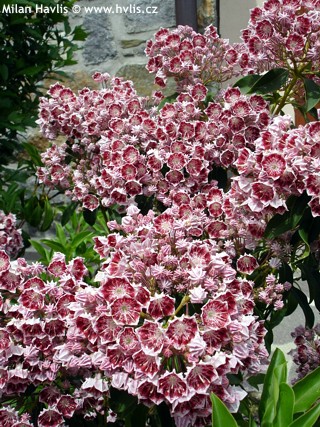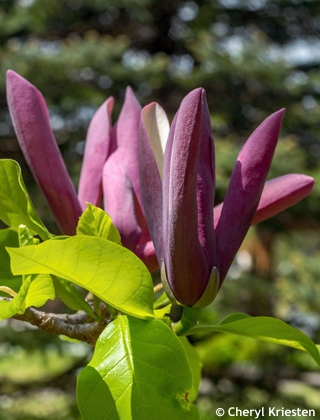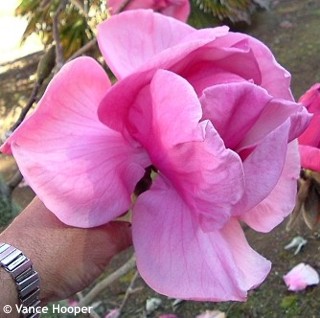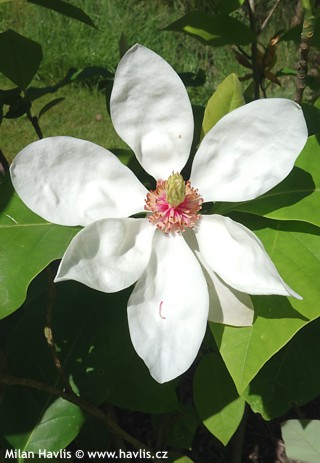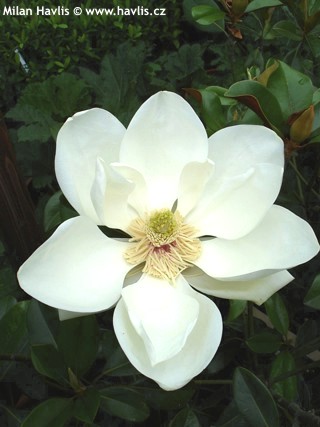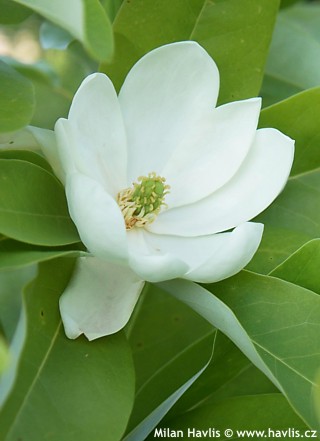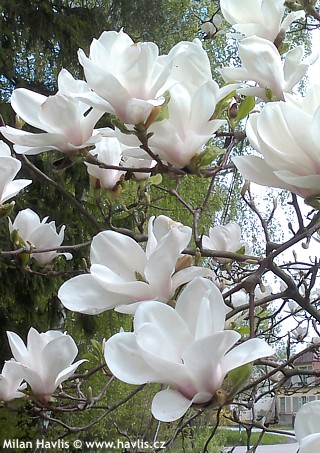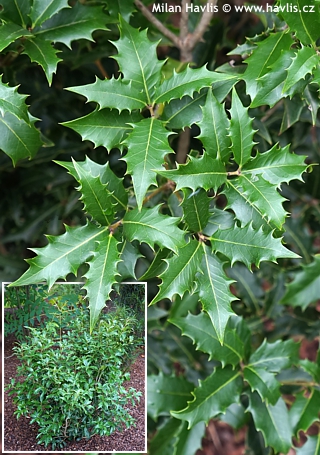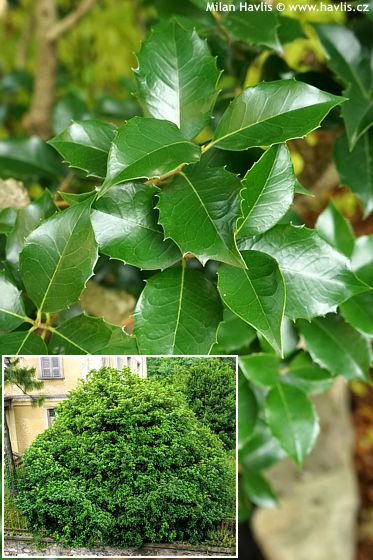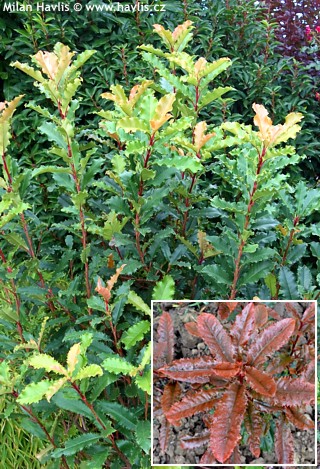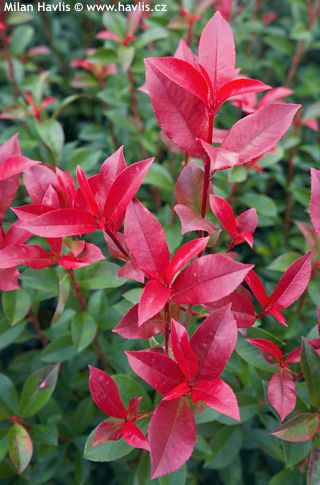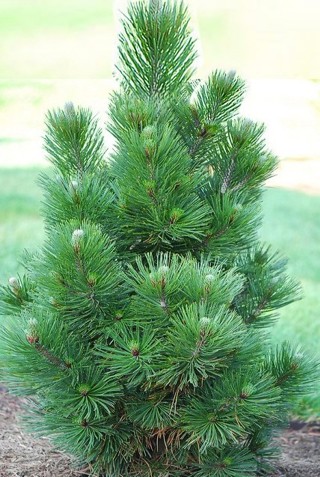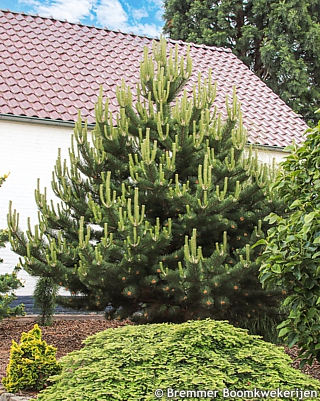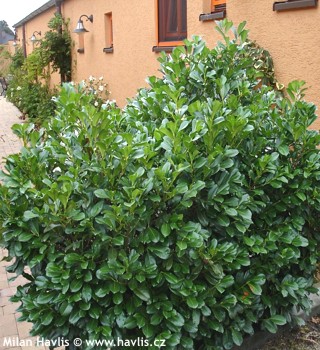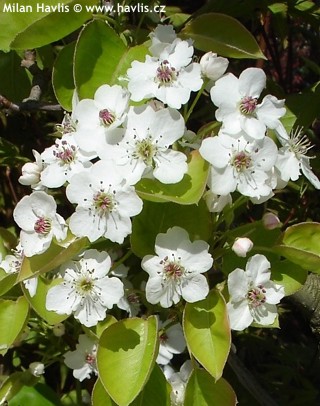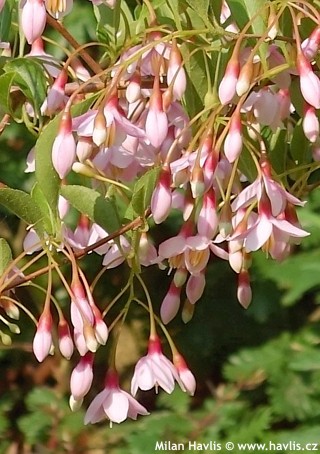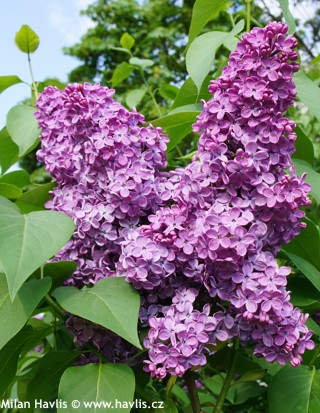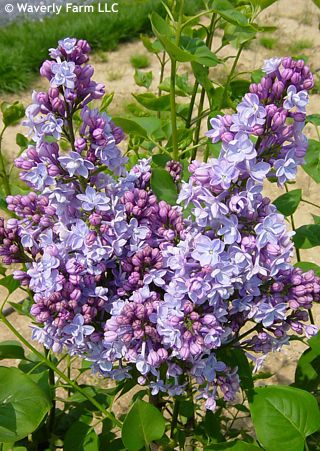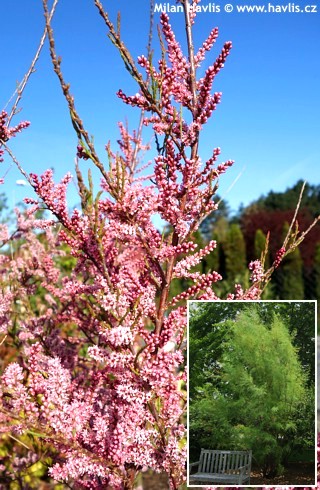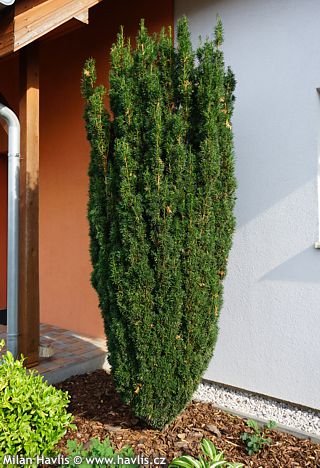CURRENTLY IN STOCK:
The species of Japanese maple is a green-leaved tree or rather a large shrub. End even though among landscapers and general green-finger-public the red-leaved versions tend to be more popular I suppose that this is the most beautiful and elegant tree of our climate. With its naturally green leaves i ...

3 - 8m

3 - 6m

full to partial sun

5 (down to -29°C)

for zone 5+6

for zone 7
Katsura is a Japanese maple that is highly decorative especially in spring, when new leaves emerge, and in autumn, when they change again. They are typically palmate, rather small, 5-lobed, chartreuse yellow-green with coppery margins in early spring, rich green in summer, and glowing golden-yellow ...

1,5 - 3m

1,5 - 3m

full to partial sun

5 (down to -29°C)

for zone 5+6

for zone 7
Red Emperor is another red-leaved Japanese maple, this time from the USA, where it was introduced in 1976 by Dick Wolff from Red Maple Nursery in Pennsylvania. He was an enthusiastic lover of the vibrant shades of red and maroon leaves on Japanese maples, and he was especially proud of his Red Emper ...

4 - 6m

2 - 4m

full to partial sun

5 (down to -29°C)

for zone 5+6

for zone 7
Sango-kaku is a Japanese maple that has so many colours that we are lost for words. Its main attraction is the colour of bark which is orangey-red in summer and bright coral red in winter. The palmate leaves have 5 lobes and emerge orangey-yellow with salmon pink shades, changing to light green or y ...

2 - 4m

1 - 2,5m

semi-shade / partial sun

5 (down to -29°C)

for zone 5+6

for zone 7
Although this incense cedar is one of the most sought after conifers of the south, it seems to perform much better in Czech climate thanks to cold and wet winters. It needs a lot of sun in summer though to keep its varigated leaves golden. Though, if the sun is not as hot as in the Mediterranean, fo ...

5 - 10m

full to partial sun

5 (down to -29°C)

for zone 5+6

for zone 7
Monumentalis is a unique version of hornbeam with strictly conical shape and very slow growth rate. Leaves are bright green and cover the whole of the plant. Even after they fall the tree remains very attractive with its regularly growing branches making a bonsai appearance. No pruning or trimming r ...

1 - 3m

1 - 1,5m

full to partial sun

4 (down to -34°C)

for zone 5+6

for zone 7
Himalayan cedar is the most graceful of all cedars. Bushes Electra is a slower growing variety bred by Richard Bush in Canby, USA, at the turn of the century. It bears showy, 2-3 cm long, needles of silvery blue colour on insolated parts of the plant, and blue-green color inside the bush. The side b ...

4 - 7m

2 - 3m

full sun

5b (down to -27°C)

for zone 5+6

for zone 7
Gold Rider is still quite new in the Leyland cypress family. It produces flattened sprays of bright yellow-green, scale-like leaves. The branches are not pendent, not erect. Something in between and that makes it stand apart from chamaecyparis. The big advantage of Leyland cypress is the fact that i ...

2 - 10m

2 - 4m

full to partial sun

5b (down to -27°C)

for zone 5+6

for zone 7
Leyland cypress is a hybrid genus between cupressus macrocarpa and chamaecyparis nootkatensis. It is a fast growing conifer, used mainly in hedges and as windbreak.
It produces flattened sprays of scale-like, dark green leaves. The branches are not pendent, not erect. Something in between and that ...

2 - 12m

2 - 4m

full to partial sun

7 (down to -23°C)

for zone 5+6

for zone 7
AZURA is undoubtedly the first reliably hardy cider gum variety of European origin. It has typically steel blue-green, rounded, highly aromatic, evergreen foliage along silvery blue stems. It grows moderately to fast and its ultimate height is expected to reach about 4-5m without pruning but it can ...

2 - 4m

1,5 - 2m

full to partial sun

7 (down to -23°C)

for zone 5+6

for zone 7
We always notice a happy smile on our customers’ faces when we show them a plant that is beautiful and maintenance-free at the same time. This is the case of fernleaf buckthorn – a gorgeous shrub that requires zero care from the minute you plant it.
It has very narrow, fern-like, linea ...

1,5 - 2,5m

1 - 2m

full to partial sun

3 (down to -40°C)

for zone 5+6

for zone 7
Some of you, gleditsia lovers, may have read about this quite rare and unique version of honey locust. Its charm consists in the unusual colour of leaves. They are bright purple as they emerge, turning chocolate brown later and light bronze in summer. They are pinnate or bi-pinnate and look like fer ...

3 - 8m

2 - 5m

full sun

5 (down to -29°C)

for zone 5+6

for zone 7
The orchid-like flowers are pale to bright pink with a yellow throat and frilled margins. Flowers have a lovely, sweet scent. Summer Bells® is a chitalpa variety repeating flowering. It starts in early summer and last for 2-3 weeks, and then again in second half of August for further 2 weeks. U ...

VI - VIII

3 - 5m

2 - 4m

full sun

5b (down to -27°C)

for zone 5+6

for zone 7
Heckenstar® is quite a novelty from Germany, bred by Hans Hachmann and patented only in 1998. It is a cross ilex aquifolium „Pyramidalis“ and ilex x meserveae „Blue Prince“® . The result is a strictly upright growing, very hardy, evergreen shrub. Outside Europe it ...

2 - 3m

0,5 - 1,5m

full to partial sun

5 (down to -29°C)

for zone 5+6

for zone 7
Hibernica is an old juniper variety first introduced in 1838, and still in popular demand, especially for its habit and reliability. Hibernica juniper is an evergreen, columnar shrub of dense habit. It has short, prickly, rich green needles with bluish hues. The branches grow strictly upwards and do ...

3 - 5m

0,5 - 1,5m

full to partial sun

4 (down to -34°C)

for zone 5+6

for zone 7
Bull's Eye is a favourite mountain laurel variety from times when it was difficult to get any other. This one has rich burgundy red colour on white background and white-ish buds. Flowering is abundant and reliable. It grows wider than tall, like a rhododendron.
There are many cultivars combining a ...

VI - VI

0,5 - 1,5m

0,5 - 1m

full to partial sun

4 (down to -34°C)

for zone 5+6

for zone 7
Black Beauty magnolia is another brooklynensis hybrid from the Brooklyn Botanic Gardens, USA, which, surprisingly, does not bear yellow flowers. It is a cross of m.acuminata (cucumber magnolia with yellow flowers) and m.liliiflora (lily magnolia with rosy red flowers). It produces 10-20 cm tall, ere ...

IV

3 - 6m

2 - 3m

full to partial sun

5 (down to -29°C)

for zone 5+6

for zone 7
Felix magnolia, also called Felix Jury, is a recent introduction by Mark Jury, and a gorgeous hybrid named after his late father who fortunately lived to see its first flowers, but not its worldwide success a few years later. It was made in 1984 as a cross between extremely large-flowered Atlas and ...

IV - V

2 - 3,5m

1,5 - 2m

full to partial sun

5b (down to -27°C)

for zone 5+6

for zone 7
Among deciduous magnolias there are varieties that bloom later than most of the Asian ones. This selection named Charles Coates originated in England in Kew, famous for its Kew Gardens, by crossing m.sieboldii and m.tripetala.It makes leaves first, and only at the end of spring it shows a magnificen ...

V - VI

3 - 5m

1,5 - 2,5m

full to partial sun

5b (down to -27°C)

for zone 5+6

for zone 7
Goliath is bushier than the species. As you can tell by its name, something is going to be extraordinary here. True: the flowers are extremely large, often up to 30 cm wide, strongly fragrant and appear on the plant usually from June, often from late May if the end of spring is hot, and continue blo ...

V - IX

3 - 8m

3 - 4m

full sun

7 (down to -23°C)

for zone 5+6

for zone 7
Sweet bay is a unique magnolia species that was first described by Carl Linnaeus, founder of modern taxonomy, already in 1753. Magnolia virginiana, that was the Latin name it received, was the very first magnolia species ever listed under this name. Interestingly, the plant had already been sent fro ...

VII - VIII

3 - 6m

2 - 3m

full to partial sun

5 (down to -29°C)

for zone 5+6

for zone 7
If you are a magnolia lover who still has some space in the garden which is a rare combination, have a look at this immense beauty in white named Alba Superba. It is a reliable and hardy variety of saucer magnolia. If the weather is nice, from mid April (in zone 6) begins to open its profusion of me ...

IV - V

4 - 6m

3 - 4m

full to partial sun

5 (down to -29°C)

for zone 5+6

for zone 7
Gulftide is an American variety of holly osmanthuswhich originated in Gulf Stream Nursery in Virginia, possibly in 1980’s. It is easily distinguished by heavily serrated / spiny leaves and more uniform, dense growth. Its evergreen leaves are 5-8 cm long, deep green, and glossy. In spring they ...

IX - X

2 - 4m

1,5 - 2,5m

full to partial sun

5b (down to -27°C)

for zone 5+6

for zone 7
Fortune's osmanthus is a cross between o.heterophyllus (small, very spiny leaves) and o.fragrans (large, entire leaves). It was first brought from Japan to Europe to Holland Philipp Franz von Siebold in 1856. Over the years its name has developed from osmanthus aquifolium to o.aquifolium var.latifo ...

X - XI

1,5 - 3m

1,5 - 2,5m

full to partial sun

6b (down to -21°C)

for zone 5+6

for zone 7
Chinese photinia is a species which is less common in trade and almost nonexistent in European nurseries. Reason being that all European encyclopedias rate it much less winter hardy than David’s or Fraser’s photinia which are very popular evergreen shrubs used for hedges in zones 6 and h ...

1,5 - 2m

1 - 1,3m

full sun to shade

7 (down to -23°C)

for zone 5+6

for zone 7
Carré Rouge is a French selection of Fraser's photinia from Red Robin variety. It originated in Nantes and produces smaller leaves of intensely red colour when young, maturing to deep green, yet keeping the top leaves crimson or wine red. New leaves with red colour emerge at least twice a year: in ...

IV

1,5 - 3m

1 - 2m

full to partial sun

7 (down to -23°C)

for zone 5+6

for zone 7
Pine trees are superb trees which grow in a wide climate scale - from cold northern countries to hot coastal sites. They are probably most beautiful in their natural environment.
Satellit is a narrowly columnar variety of Bosnian pine. Thanks to slow growth and limited size it is suitable for smal ...

3 - 6m

1 - 1,5m

full sun

5 (down to -29°C)

for zone 5+6

for zone 7
Oregon Green is a very beautiful addition to the family of small to mid-sized pine trees. It was found as a seedling by Morris Van Meter in his nursery in Boring, Oregon, USA, in early 1990's. It is easily distinguished by its stiff habit with erect branches where needles are borne in such density a ...

4 - 6m

3 - 4m

full sun

4 (down to -34°C)

for zone 5+6

for zone 7
Etna® is the queen of laurels. Its bright emerald green leaves are glossy and healthy, slightly curved at the ends and edges which gives the whole shrub added plasticity. New leaves emerge coloured in rich bronze. Etna’s foliage is much more tolerant of winter sun scald than most laurels. ...

IV - V

1,5 - 2,5m

1,5 - 2,5m

full sun to shade

5b (down to -27°C)

for zone 5+6

for zone 7
Callery pear is a flowering (ornamental) pear tree which is cultivated for its profuse flowering in April. The tree produces a huge quantity of snow white flowers followed by small, almost spherical fruit that is edible but not too tasty.
Chanticleer is a famous variety of narrowly conical habit. I ...

IV - V

8 - 13m

4 - 6m

full sun

5 (down to -29°C)

for zone 5+6

for zone 7
Pink Chimes is a rare variety of Japanese snowbell with pink, bell-shaped flowers that hang on short stalks underneath the leaved branches. Leaves are glossy, ovate to elliptic, mid to dark green, turning yellow or red in autumn. It can be pruned at the end of winter.
Grow it as a specimen shrub or ...

VI - VI

3 - 5m

2 - 4m

full to partial sun

5 (down to -29°C)

for zone 5+6

for zone 7
Charles Joly and Michel Buchner are probably the most common lilac varieties in the Czech Republic. The flower colour of Charles Joly is rich lilac-pink. The inflorescence is composed of single, very fragrant flowers that resemble mezereon flowers forming a dense, erect panicle. Lilac flowers are ve ...

V - V

2 - 4m

2 - 3m

full to partial sun

3 (down to -40°C)

for zone 5+6

for zone 7
Michel Buchner and with Charles Joly are probably the most common lilac varieties in the Czech Republic. The flower colour of Michel Buchner is a bit difficult to describe – something between lilac pink, light violet, and mauve. Individual flowers are double and form a dense, erect panicle. Li ...

V - V

2 - 4m

2 - 3m

full to partial sun

3 (down to -40°C)

for zone 5+6

for zone 7
Tamarisk (salt cedar) is a beautiful plant with tiny leaves and profusion of flowers. There are several types (species) which differ mainly in their flowering period. This one is called 4-stamen tamarisk and belongs to the spring flowering species and Rubra is a variety with very rich pink flowers f ...

V - VI

2 - 3m

1 - 2m

full sun

5 (down to -29°C)

for zone 5+6

for zone 7
Irish yew is a popular evergreen conifer. They are very practical due to many varieties available offering various shapes and sizes. Another advantage is that they grow well in both full sun and in deep shade.
Fastigiata has strictly upright, narrow habit. It grows very slowly which makes it suitab ...

3 - 7m

1 - 2m

full sun to shade

5 (down to -29°C)

for zone 5+6

for zone 7

































